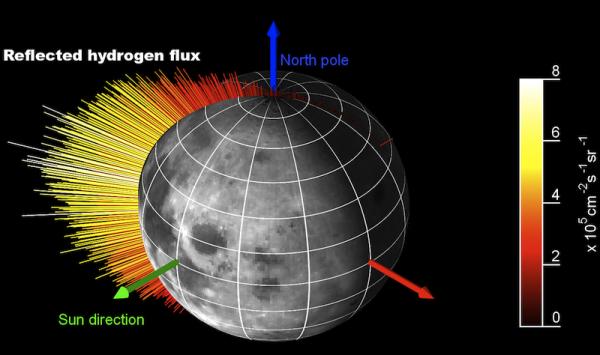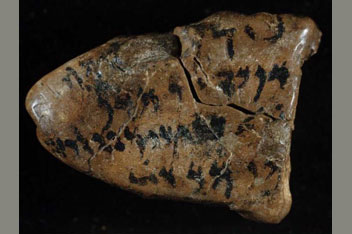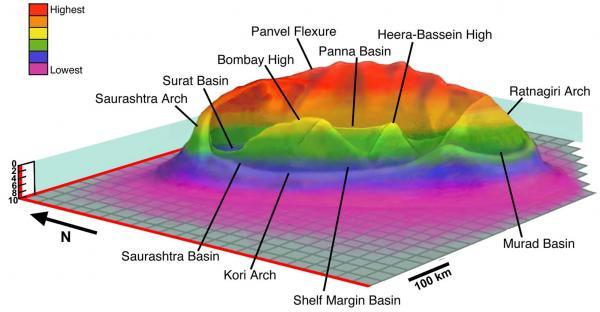
© Wieser et al.Chandrayaan-1 SARA measurements of hydrogen flux recorded on the Moon on 6 February 2009.
The Moon is a big sponge that absorbs electrically charged particles given out by the Sun. These particles interact with the oxygen present in some dust grains on the lunar surface, producing water. This discovery, made by the ESA-ISRO instrument SARA onboard the Indian Chandrayaan-1 lunar orbiter, confirms how water is likely being created on the lunar surface.
It also gives scientists an ingenious new way to take images of the Moon and any other airless body in the Solar System.
The lunar surface is a loose collection of irregular dust grains, known as regolith. Incoming particles should be trapped in the spaces between the grains and absorbed. When this happens to protons they are expected to interact with the oxygen in the lunar regolith to produce hydroxyl and water. The signature for these molecules was recently found and reported by Chandrayaan-1's Moon Mineralogy Mapper (M3) instrument team.
The SARA results confirm that solar hydrogen nuclei are indeed being absorbed by the lunar regolith but also highlight a mystery: not every proton is absorbed. One out of every five rebounds into space. In the process, the proton joins with an electron to become an atom of hydrogen. "We didn't expect to see this at all," says Stas Barabash, Swedish Institute of Space Physics, who is the European Principal Investigator for the Sub-keV Atom Reflecting Analyzer (SARA) instrument, which made the discovery.


